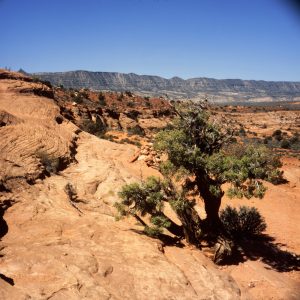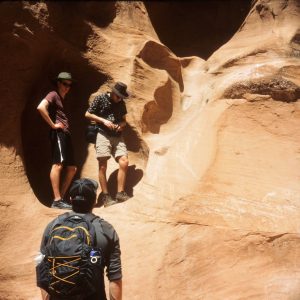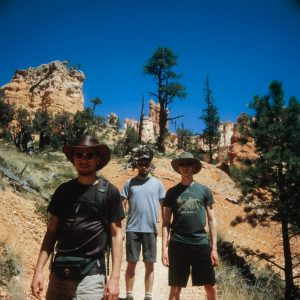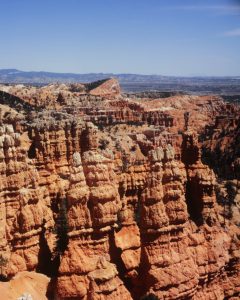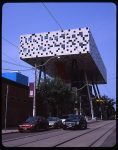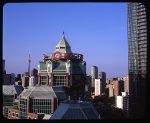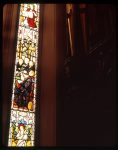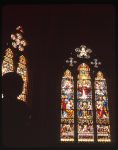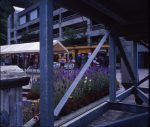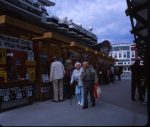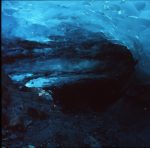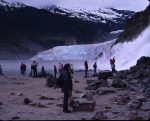
Right Side
If the Juneau tourists get a bus to the Mendenhall Glacier, a mile long walk along the willows on the lake shore will bring them to the bottom of Nugget Creek. It offers a nice waterfall, and good view of the glacier.We’ve been here before.
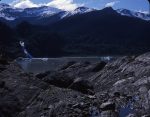
Left Side
And if one walks several miles up the “left” side of the lake, and climbs a little, it is much quieter and less crowded. Not many unguided tourists make it this far up the trail, so when I meet one I try to make them feel welcome. If the lenses in your viewer are good, you can see the crowd of tourists on the beech at the base of the waterfall.
Twenty years ago, all the open water in both images was ice. The face of the glacier was just past the rightmost iceberg in the second image. At that time, the bedrock was below more than 100′ of ice, and Nugget Falls disappeared under the edge of the glacier.
Both images are from my TL120, Nugget Falls has been captured with Kodak E100G rather than my usual Provia.
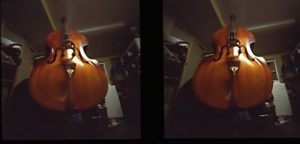
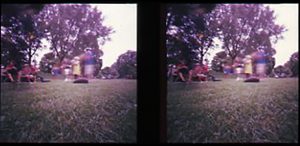
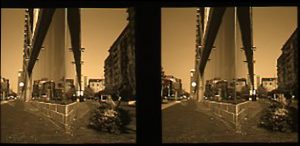
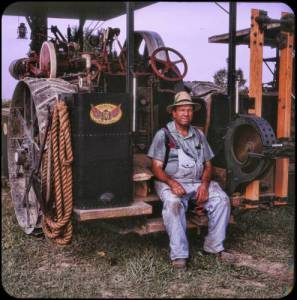 One of the traction engine owners was having a rest. He was gracious enough to let me get this shot. This was at the Milton Steam Era show, held every Labour Day weekend. Shot with my TL120 on Provia 100f. I can’t recall the aperture, but it must have been large on this overcast day.
One of the traction engine owners was having a rest. He was gracious enough to let me get this shot. This was at the Milton Steam Era show, held every Labour Day weekend. Shot with my TL120 on Provia 100f. I can’t recall the aperture, but it must have been large on this overcast day.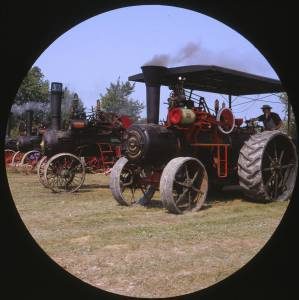 I have wanted to try a circular mask for a while. I made this mask by cutting a piece of unexposed film with a hobby punch. Then I tried to find a subject slide to go with it. Turns out that a circular mask cuts out a huge amount of image. This makes it unsuitable for the vast majority of slides. I now consider it an option, just like portrait and landscape mounts, for when there are distractions on a slide pair that you need to remove.
I have wanted to try a circular mask for a while. I made this mask by cutting a piece of unexposed film with a hobby punch. Then I tried to find a subject slide to go with it. Turns out that a circular mask cuts out a huge amount of image. This makes it unsuitable for the vast majority of slides. I now consider it an option, just like portrait and landscape mounts, for when there are distractions on a slide pair that you need to remove.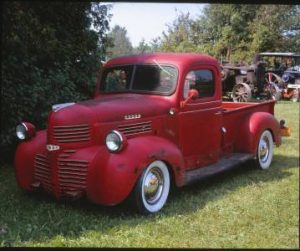 Taken at the Milton Ontario, Steam Era Show, this truck looked great on the grass. It is a bit grainy due to the Provia 100 film (I still have a roll or two).
Taken at the Milton Ontario, Steam Era Show, this truck looked great on the grass. It is a bit grainy due to the Provia 100 film (I still have a roll or two).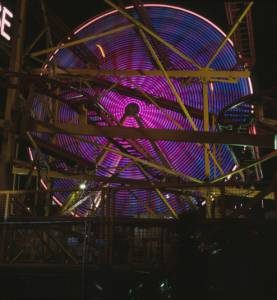 A bit different take on the obvious ferris wheel shot. I was looking for a different image, and I turned around and saw this view. I thought it would be interesting in stereo. f22 8 seconds on Provia 100f film thru my TL120.
A bit different take on the obvious ferris wheel shot. I was looking for a different image, and I turned around and saw this view. I thought it would be interesting in stereo. f22 8 seconds on Provia 100f film thru my TL120.